#rootwork
Text

Naomi Native depicted as Oshun, Yoruba goddess of love, beauty, and fertility
Created by A.J. Hamilton
#beautiful black people#black mermaid#beautiful black woman#black woman#oshun#goddess#Yoruba goddess#goddess of love#sweet water#Naomi native#witches of color#black witch#afro witch#hoodoo#african american witch#voodoo#rootwork#pagans of color#bruja#conjure#santeria#witchcraft#sirens#mythical creatures#witches of tumblr#digital art#feminist art#fat black women#fat is beautiful#thicc goth
14K notes
·
View notes
Text
Hey !!!!!
If you’re a African-American Hoodoo practitioner, please do not get these three books, as they are written by white people who are doing digital blackface.
Hoodoo is a closed African-American spirituality practice that only African-Americans can practice. We do not have a lot of resources or books written by African-Americans so I will try to provide all the books that I use by actual African-Americans.
It’s upsetting that I find a book about Hoodoo thats written by a white person or a non-African-American person. I don’t like that.
Some African American Hoodoo authors I suggest are:
Stephanie Rose Bird
Monique Joiner Siedlak
and Tayannah Lee Mcquillar
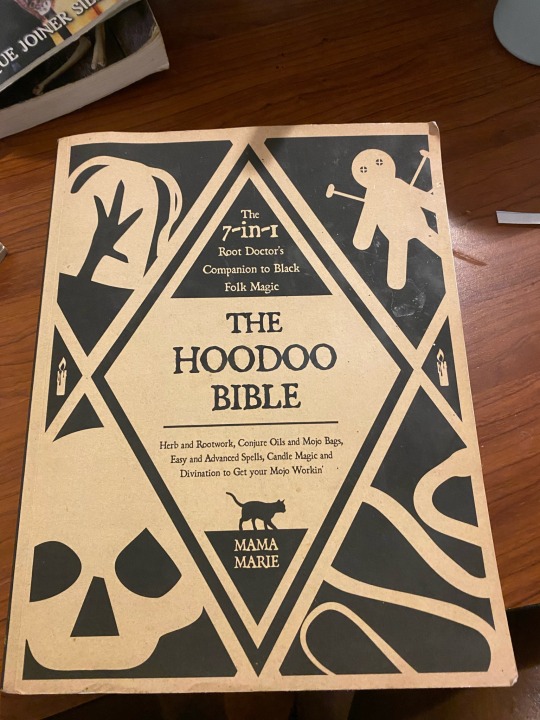
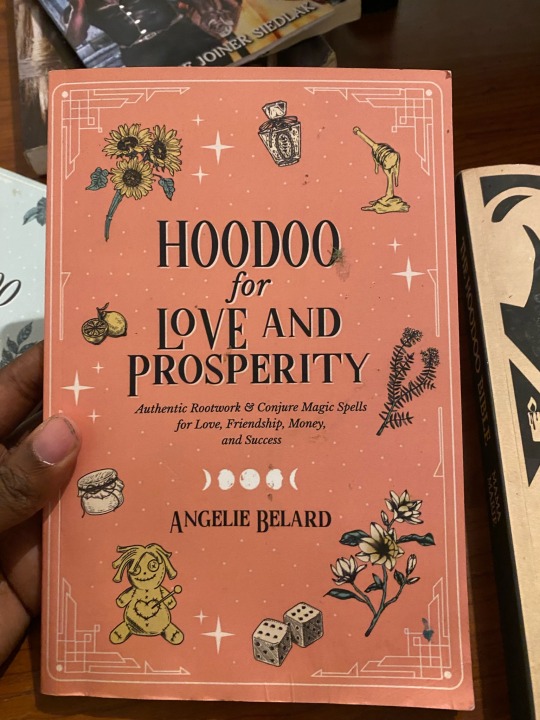
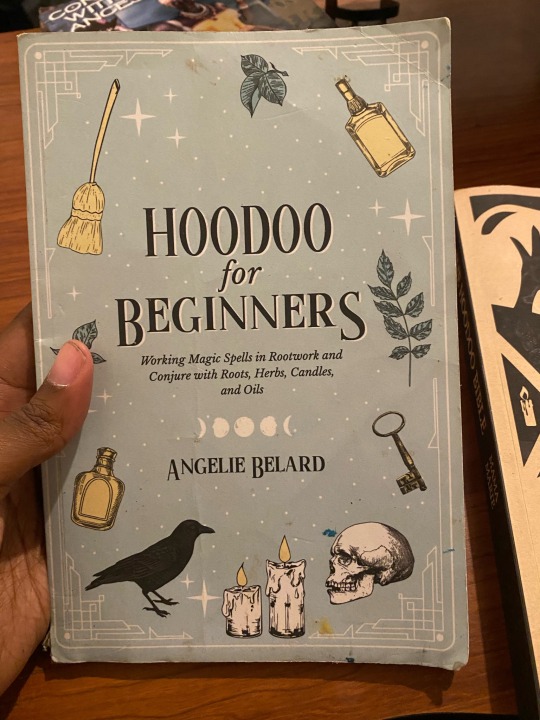
#hoodoo#hoodoo book collection#hoodoobooklist#hoodooheritagemonth#hoodoo practitioner#hoodoo information#hoodoobooks#African American#aa#african american spirituality#rootwork#boost#viral#black spirituality#trending#soulaan#souls and#african american culture
500 notes
·
View notes
Text
Witchy tip: Do rituals under the same moon phase that was present the day you were born. You have a special connection with that energy.
I have found this to be very useful. For some reason folks think you can only harness the most energy from the New and Full moons.
#baby witch#beginner witch#green witch#pagan witch#spellwork#witch aesthetic#witchcore#witchcraft#witchythings#witchyvibes#witchy tips#hoodoo tips#conjure tip#rootwork#witchy advice#moon magick#moon spells
712 notes
·
View notes
Text
Herbalism book reccomendations 📚🌿
General herbalism:
The Herbal Medicine-Maker's Handbook by Green J. (2011)
20,000 Secrets of Tea: The Most Effective Ways to Benefit from Nature's Healing Herbs by Zak V. (1999)
The Modern Herbal Dispensatory: A Medicine-Making Guid by Easly T. (2016)
A-Z Guide to Drug-Herb-Vitamin Interactions by Gaby A.R.
American Herbal Products Association's Botanical Safety Handbook (2013)
Medical Herbalism: The Science and Practice of Herbal Medicine by Hoffman D. (2003)
Herbal Medicine for Beginners: Your Guide to Healing Common Ailments with 35 Medicinal Herbs by Swift K & Midura R (2018)
Today's Herbal Health: The Essential Reference Guide by Tenney L. (1983)
Today's Herbal Health for Women: The Modern Woman's Natural Health Guide by Tenney L (1996)
Today's Herbal Health for Children: A Comprehensive Guide to Understanding Nutrition and Herbal Medicine for Children by Tenney L. (1996)
For my black folks!!!
African Medicine: A Complete Guide to Yoruba Healing Science and African Herbal Remedies by Sawandi T.M. (2017)
Handbook of African Medicinal Plants by Iwu M.M. (1993)
Working The Roots: Over 400 Years of Traditional African American Healing by Lee M.E. (2017)
Hoodoo Medicine: Gullah Herbal Remedies by Mitchell F. (2011)
African American Slave Medicine: Herbal and non-Herbal Treatments by Covey H.C. (2008)
The Art & Practice of Spiritual Herbalism: Transform, Heal, and Remember with the Power of Plants and Ancestral Medicine by Rose K.M. (2022)
Indigenous authors & perspectives!!
Braiding Sweetgrass: Indigenous Wisdom, Scientific Knowledge and the Teachings of Plants by Kimmerer R.W. (2015)
Gathering moss by Kimmerer R.W. (2003)
The Plants Have So Much To Give All We Have To Do Is Ask by Siisip Geniusz M. (2005)
Our Knowledge Is Not Primitive: Decolonizing Botanical Anishinaabe Teachings by Djinn Geniusz W. (2009)
Ancient Pathways, Ancestral Knowledge: ethnobotany and ecological wisdom of indigenous peoples of northwestern North America by Turner N. (2014)
A Taste of Heritage: Crow Indian Recipes and Herbal Medicines by Hogan Snell A. (2006)
Medicines to Help Us by Belcourt C. (2007)
After the First Full Moon in April: A Sourcebook of Herbal Medicine from a California Indian Elder by Grant Peters J. (2010)
Latin american herbalism works!!
Earth Medicines: Ancestral Wisdom, Healing Recipes, and Wellness Rituals from a Curandera by Cocotzin Ruiz F. (2021)
Hierbas y plantas curativas by Chiti J.F. (2015)
Del cuerpo a las raíces by San Martín P.P., Cheuquelaf I. & Cerpa C. (2011)
Manual introductorio a la Ginecología Natural by San Martín P.P.
🌿This is what I have for now but I’ll update the post as I find and read new works, so keep coming if you wanna check for updates. Thank you for reading 🌿
#herbalism#herbal medicine#herbal health#green witch#green witchcraft#green magic#herbal magic#herbal witch#herbal witchcraft#plant medicine#plant magic#plant witch#folk healer#healing witch#healing magic#curanderismo#yerbera#curandera#rootwork#rootworker
2K notes
·
View notes
Text
Reading list for Afro-Herbalism:
A Healing Grove: African Tree Remedies and Rituals for the Body and Spirit by Stephanie Rose Bird
Affrilachia: Poems by Frank X Walker
African American Medicine in Washington, D.C.: Healing the Capital During the Civil War Era by Heather Butts
African American Midwifery in the South: Dialogues of Birth, Race, and Memory by Gertrude Jacinta Fraser
African American Slave Medicine: Herbal and Non-Herbal Treatments by Herbert Covey
African Ethnobotany in the Americas edited by Robert Voeks and John Rashford
Africanisms in the Gullah Dialect by Lorenzo Dow Turner
Africans and Native Americans: The Language of Race and the Evolution of Red-Black Peoples by Jack Forbes
African Medicine: A Complete Guide to Yoruba Healing Science and African Herbal Remedies by Dr. Tariq M. Sawandi, PhD
Afro-Vegan: Farm-Fresh, African, Caribbean, and Southern Flavors Remixed by Bryant Terry
Barracoon: The Story of the Last “Black Cargo” by Zora Neale Hurston
Big Mama’s Back in the Kitchen by Charlene Johnson
Big Mama’s Old Black Pot by Ethel Dixon
Black Belief: Folk Beliefs of Blacks in America and West Africa by Henry H. Mitchell
Black Diamonds, Vol. 1 No. 1 and Vol. 1 Nos. 2–3 edited by Edward J. Cabbell
Black Faces, White Spaces: Reimagining the Relationship of African Americans to the Great Outdoors by Carolyn Finney
Black Food Geographies: Race, Self-Reliance, and Food Access in Washington, D.C. by Ashanté M. Reese
Black Indian Slave Narratives edited by Patrick Minges
Black Magic: Religion and the African American Conjuring Tradition by Yvonne P. Chireau
Black Nature: Four Centuries of African American Nature Poetry edited by Camille T. Dungy
Blacks in Appalachia edited by William Turner and Edward J. Cabbell
Caribbean Vegan: Meat-Free, Egg-Free, Dairy-Free Authentic Island Cuisine for Every Occasion by Taymer Mason
Dreams of Africa in Alabama: The Slave Ship Clotilda and the Story of the Last Africans Brought to America by Sylviane Diouf
Faith, Health, and Healing in African American Life by Emilie Townes and Stephanie Y. Mitchem
Farming While Black: Soul Fire Farm’s Practical Guide to Liberation on the Land by Leah Penniman
Folk Wisdom and Mother Wit: John Lee – An African American Herbal Healer by John Lee and Arvilla Payne-Jackson
Four Seasons of Mojo: An Herbal Guide to Natural Living by Stephanie Rose Bird
Freedom Farmers: Agricultural Resistance and the Black Freedom Movement by Monica White
Fruits of the Harvest: Recipes to Celebrate Kwanzaa and Other Holidays by Eric Copage
George Washington Carver by Tonya Bolden
George Washington Carver: In His Own Words edited by Gary Kremer
God, Dr. Buzzard, and the Bolito Man: A Saltwater Geechee Talks About Life on Sapelo Island, Georgia by Cornelia Bailey
Gone Home: Race and Roots through Appalachia by Karida Brown
Ethno-Botany of the Black Americans by William Ed Grime
Gullah Cuisine: By Land and by Sea by Charlotte Jenkins and William Baldwin
Gullah Culture in America by Emory Shaw Campbell and Wilbur Cross
Gullah/Geechee: Africa’s Seeds in the Winds of the Diaspora-St. Helena’s Serenity by Queen Quet Marquetta Goodwine
High on the Hog: A Culinary Journey from Africa to America by Jessica Harris and Maya Angelou
Homecoming: The Story of African-American Farmers by Charlene Gilbert
Hoodoo Medicine: Gullah Herbal Remedies by Faith Mitchell
Jambalaya: The Natural Woman’s Book of Personal Charms and Practical Rituals by Luisah Teish
Just Medicine: A Cure for Racial Inequality in American Health Care by Dayna Bowen Matthew
Leaves of Green: A Handbook of Herbal Remedies by Maude E. Scott
Like a Weaving: References and Resources on Black Appalachians by Edward J. Cabbell
Listen to Me Good: The Story of an Alabama Midwife by Margaret Charles Smith and Linda Janet Holmes
Making Gullah: A History of Sapelo Islanders, Race, and the American Imagination by Melissa Cooper
Mandy’s Favorite Louisiana Recipes by Natalie V. Scott
Medical Apartheid: The Dark History of Medical Experimentation on Black Americans from Colonial Times to the Present by Harriet Washington
Mojo Workin’: The Old African American Hoodoo System by Katrina Hazzard-Donald
Motherwit: An Alabama Midwife’s Story by Onnie Lee Logan as told to Katherine Clark
My Bag Was Always Packed: The Life and Times of a Virginia Midwife by Claudine Curry Smith and Mildred Hopkins Baker Roberson
My Face Is Black Is True: Callie House and the Struggle for Ex-Slave Reparations by Mary Frances Berry
My Grandmother's Hands: Racialized Trauma and the Pathway to Mending Our Hearts and Bodies by Resmaa Menakem
On Her Own Ground: The Life and Times of Madam C.J. Walker by A'Lelia Bundles
Papa Jim’s Herbal Magic Workbook by Papa Jim
Places for the Spirit: Traditional African American Gardens by Vaughn Sills (Photographer), Hilton Als (Foreword), Lowry Pei (Introduction)
Post Traumatic Slave Syndrome by Dr. Joy DeGruy
Rooted in the Earth: Reclaiming the African American Environmental Heritage by Diane Glave
Rufus Estes’ Good Things to Eat: The First Cookbook by an African-American Chef by Rufus Estes
Secret Doctors: Ethnomedicine of African Americans by Wonda Fontenot
Sex, Sickness, and Slavery: Illness in the Antebellum South by Marli Weiner with Mayzie Hough
Slavery’s Exiles: The Story of the American Maroons by Sylviane Diouf
Soul Food: The Surprising Story of an American Cuisine, One Plate at a Time by Adrian Miller
Spirituality and the Black Helping Tradition in Social Work by Elmer P. Martin Jr. and Joanne Mitchell Martin
Sticks, Stones, Roots & Bones: Hoodoo, Mojo & Conjuring with Herbs by Stephanie Rose Bird
The African-American Heritage Cookbook: Traditional Recipes and Fond Remembrances from Alabama’s Renowned Tuskegee Institute by Carolyn Quick Tillery
The Black Family Reunion Cookbook (Recipes and Food Memories from the National Council of Negro Women) edited by Libby Clark
The Conjure Woman and Other Conjure Tales by Charles Chesnutt
The Home Place: Memoirs of a Colored Man’s Love Affair with Nature by J. Drew Lanham
The Jemima Code: Two Centuries of African American Cookbooks by Toni Tipton-Martin
The President’s Kitchen Cabinet: The Story of the African Americans Who Have Fed Our First Families, from the Washingtons to the Obamas by Adrian Miller
The Taste of Country Cooking: The 30th Anniversary Edition of a Great Classic Southern Cookbook by Edna Lewis
The Tuskegee Syphilis Study: An Insiders’ Account of the Shocking Medical Experiment Conducted by Government Doctors Against African American Men by Fred D. Gray
Trace: Memory, History, Race, and the American Landscape by Lauret E. Savoy
Vegan Soul Kitchen: Fresh, Healthy, and Creative African-American Cuisine by Bryant Terry
Vibration Cooking: Or, The Travel Notes of a Geechee Girl by Vertamae Smart-Grosvenor
Voodoo and Hoodoo: The Craft as Revealed by Traditional Practitioners by Jim Haskins
When Roots Die: Endangered Traditions on the Sea Islands by Patricia Jones-Jackson
Working Conjure: A Guide to Hoodoo Folk Magic by Hoodoo Sen Moise
Working the Roots: Over 400 Years of Traditional African American Healing by Michelle Lee
Wurkn Dem Rootz: Ancestral Hoodoo by Medicine Man
Zora Neale Hurston: Folklore, Memoirs, and Other Writings: Mules and Men, Tell My Horse, Dust Tracks on a Road, Selected Articles by Zora Neale Hurston
The Ways of Herbalism in the African World with Olatokunboh Obasi MSc, RH (webinar via The American Herbalists Guild)
1K notes
·
View notes
Text

🌙🦋hoodoo inspired witchy moodboard✨🔮
#hoodoo#witchblr#rootwork#conjure#afro witch#black witch#bruja#moodboard#my edit#witchblr moodboard#love magic#love witch
363 notes
·
View notes
Text
Hoodoo is CLOSED to non black AMERICANS
Hoodoo is distinct in that it involves working with specific ancestral spirits and deities, many of whom remain unfamiliar to the broader spiritual community. This sacred connection extends beyond mere knowledge; it is an intimate relationship with spirits deeply ingrained in the Hoodoo pantheon. These spiritual entities are closely tied to the experiences of Black Americans, and understanding them requires a profound awareness of one's lineage.
:
Hoodoo is considered a closed practice, meaning that access to its teachings is earned through guidance and mentorship. True practitioners are taught; they don't self-proclaim. Unfortunately, there is a concerning trend of non-Black individuals claiming to practice Hoodoo without a genuine understanding of its essence. Many cannot name a single spirit from the Hoodoo pantheon, exposing a significant gap in their knowledge.
It's crucial to distinguish Hoodoo from general folk magick practices. Hoodoo demands practitioners to delve into their lineage, understand their history, and grow in spiritual wisdom. The conflation of Hoodoo with generic folk magick demonstrates a lack of comprehension about the unique cultural and historical underpinnings that define Hoodoo. Hoodoo requires knowledge of the American slave trade and its affects on black Americans
Ancestral spirits within Hoodoo are discerning entities, recognizing color and lineage. Contrary to the notion that spirits lack prejudice, Hoodoo practitioners assert that ancestral spirits work closely with their descendants. Given the historical context of slavery and oppression, it becomes inconceivable for these spirits to collaborate with those from the very lineage responsible for their suffering.
:
Unlike some other African Traditional Religions (ATRs), Hoodoo has resisted commercialization and exploitation. Its practitioners emphasize the sanctity of their belief system, urging others to respect and protect it. The appropriation of Hoodoo by those outside its cultural lineage is viewed as a disservice to its profound spiritual significance.
:
Hoodoo is not merely a set of rituals; it is a sacred tapestry woven with the threads of Black American history, spirituality, and resilience. The claim that anyone, irrespective of background, can practice Hoodoo disregards its closed nature and the imperative to honor its cultural specificity. It is time to acknowledge and respect the boundaries of Hoodoo, safeguarding its authenticity and the spiritual legacy it represents.
184 notes
·
View notes
Text
On September 10th we venerate Elevated Ancestor, Voodoo Queen of Louisiana, & Saint, Marie Catherine Laveau on her 222nd birthday 🎉
[for our Hoodoos of the Vodou Pantheon]

Marie Catherine Laveau was a dedicated Hoodoo, healer, herbalist, & midwife who, "traveled the streets [of New Orleans] like she owned them", as the most infamous Voodoo Queen of New Orleans.
Marie C. Laveau I was born a "Free Mulatto" in today's French Quarter in what was then, New France); to a mother & grandmother who were both born into slavery & later freed via freedom papers. It is believed that she grew up in the St. Ann Street cottage of her maternal grandmother.
She married Jacques Santiago-Paris, a "Quadroon" "Free Man of Color", who fled as a refugee from Saint-Domingue, Haiti from the Haitian Revolution in the former French colony . After his passing, she became known as "The Widow Paris". She then worked as a hairdresser catering to White families & later entered a domestic partnership with a French nobleman his death. She excelled at obtaining inside information on her wealthy patrons by instilling fear in their servants whom she either paid or cured of mysterious ailments. Although she never abandoned her Catholic roots, she became increasingly interested in her mother’s African traditional beliefs. The Widow Paris learned her craft from a ‘Voodoo doctor’ known variously as Doctor John or John Bayou.
Marie C. Laveau I is said to have intiated into Voodoo career sometime in the 1820s. She's believed to be descended from a long line of Voodoo Priestesses, all bearing her same name. She was also a lifelong devout Catholic. It didn’t take long before Marie C. Laveau I dominated New Orleans Voodoo culture & society before claiming title of Queen. She was the 3rd Voodoo Queen of NOLA - after Queen Sanité Dédé & Queen Marie Salopé. During her decades tenure, she was the premier beacon of hope and service to customers seeking private consultations - to aid in matters such as family disputes, health, finances, etc, created/sold gris gris, perforemed exorcisms. While her daughter Marie II was known for her more theatrical displays of public events, Marie C. Laveau I was less flamboyant in her persona. She conducted her work in 3 primary locations throughout the city: her home on St. Ann Street, Congo Square, & at Lake Pontchartrain. Despite one account of a challenge to her authority in 1850, Marie C. Laveau I maintained her leadership & influence.
The Queen died peacefully in her sleep in her ole cottage home on St. Ann Street. Her funeral was conducted according to the rite of the Catholic Church & in the absence of any Voodoo rites. To her Voodoo followers, she's venerated as a Folk Saint. In² addition to her Priesthood in Voodoo and title of Queen, she is also remembered for her community activism; visiting prisoners, providing lessons to women of the community, & doing ritual work for those in need.
She is generally believed to have been buried in plot 347, the Glapion family crypt in Saint Louis Cemetery No. 1, New Orleans. As of March 1st, 2015, there is no longer public access to St. Louis Cemetery No. 1. Entry with a tour guide is required due to continued vandalism & tomb raiding.
We pour libations & give her💐 today as we celebrate her for her love for & service to the people, through poverty, misfortune, bondage, & beyond.
Offering suggestions: flowers + libations at her grave, catholic hymns, holy water, gold rings/bracelets, money
‼️Note: offering suggestions are just that & strictly for veneration purposes only. Never attempt to conjure up any spirit or entity without proper divination/Mediumship counsel.‼️
#hoodoo#hoodoos#atr#atrs#the hoodoo calendar#conjure#rootwork#rootworkers#ancestor veneration#Marie c Laveau#Voodoo#Voodoo Queens#new orleans#new orleans Voodoo#Vodou Pantheon#Haitian Voodou
360 notes
·
View notes
Text
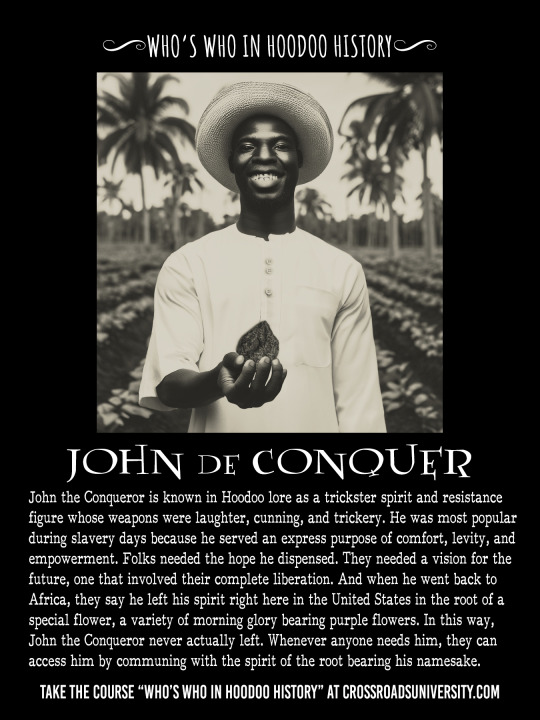
Who's Who in Hoodoo History: High John the Conqueror
John the Conqueror is known in Hoodoo folklore as a trickster spirit, always making a way out of no way at all, “hitting a straight lick with a crooked stick. Winning the jackpot with no other stake than a laugh” (Hurston 1943, 452). Slaves saw him as emerging from a whisper, finding laughter in sorrow, irony in tragedy, and triumph in despair. He was the bringer of hope, “the source and soul of our laughter and song.” He provided much-needed comedic relief in everyday life. He was a resistance figure whose weapons were laughter, cunning, and trickery.
They say that John was a prince who came from Africa, walking on the winds that filled the sails of ships through the Middle Passage. There are no photographs or drawings of the actual John the Conqueror. However, some say he resembled big John Henry, the “steel-driving man” of African American folklore. Or maybe he was “a little, hammered down, low-built man like the Devil’s doll-baby” (Hurston 1943, 452). Some say you can’t draw a spirit, so quit trying. Others say no one ever talked about what he looked like because it wasn’t necessary. White people never knew of his existence, which was by design; they weren’t supposed to know about him. He was the slaves’ biggest advocate on the downlow, and they lived for the tales of his putting one over on ole Massa.
They say that the spirit of John the Conqueror was around in the form of Brer Rabbit before John came on the scene. That wily mammal had already made the rounds on the plantations for a year and a day by the time John came along. Because he was in the form of an entertaining bunny, his tales spread far and wide. In reality, Brer Rabbit and John the Conqueror are two different spirits, but their functions are similar. Both are tricksters; both gain the edge through cunning, audacity, and intelligence. Both are empowering resistance figures.
John the Conqueror’s renown comes from the abundance of folktales describing his exploits. The most significant tales involve his role in procuring freedom through comedic relief and trickery. Freedom was of primary concern to John, and it governed near about all of his decisions. But he wasn’t the same kind of resistance figure as San Malo, Bras Coupe, or Annie Christmas. He was good at playing dumb when he needed to, and he excelled at the art of gaslighting. He played ole Massa like a fiddle.
He could make you think yellow was green and green was yellow. He would make you believe that what he did was your doing, and he was a master at leaving ole Massa standing in his place, mouth agape. He was just that cunning.
John the Conqueror was most popular during slavery days because he served an express purpose. People needed the kind of resilience and inspiration he could bring. They needed the hope he dispensed. They needed a vision for the future, one that involved their complete liberation. And when he went back to Africa, they say he left his spirit right here in the United States in the root of a special flower, a variety of morning glory bearing purple flowers. In this way, John the Conqueror never actually left. Whenever anyone needs him, they can access him by communing with the root bearing his namesake.
*Excerpt from Witch Queens Voodoo Spirits and Hoodoo Saints: A Guide to Magickal New Orleans.
Learn more about the OGs of Hoodoo:
https://www.crossroadsuniversity.com/courses/who-s-who-in-hoodoo-history
#hoodoo#conjure#rootwork#neworleansvoodoo#crossroadsuniversity#creolemoon#HighJohntheConqueror#JohnnyConker
245 notes
·
View notes
Text
For all the newcomers… Hoodoo is BLACK CULTURE
244 notes
·
View notes
Text

Frederick Douglass, a former slave, an abolitionist and author, wrote in his autobiography that he sought spiritual assistance from an enslaved conjurer named Sandy Jenkins. Sandy told Douglass to follow him into the woods where they found a root that Sandy told Douglass to carry in his right pocket to prevent any European man from whipping him. Douglass carried the root on his right side instructed by Sandy and hoped the root would work when he returned to the plantation. The cruel slave-breaker Mr. Covey told Douglass to do some work, but as Mr. Covey approached Douglass, Douglass had the strength and courage to resist Mr. Covey and defeated him after they fought.

Covey never bothered Douglass again. In his autobiography, Douglass believed the root given to him by Sandy prevented him from being whipped by Mr. Covey. Conjure for African Americans is a form of resistance against white supremacy. African American conjurers were seen as a threat by European Americans because slaves went to free and enslaved conjurers to receive charms for protection and revenge against their slaveholders. Enslaved African people used Hoodoo to bring about justice on American plantations by poisoning slaveholders and conjuring death onto their oppressors.
#african#afrakan#kemetic dreams#africans#brownskin#afrakans#brown skin#african culture#afrakan spirituality#fredrick douglas#frederick douglass#hoodoo#rootwork#ancestor veneration#conjure#sandy jenkins#mr ocvey
114 notes
·
View notes
Text

Shoppe Black’s Ultimate List of Black Owned Farms and Food Gardens🥦🥬
#shoppe black#gardening#herbs#reading#container gardening#black farmers#black gardeners#garden resources#urban farming#horticulture#permaculture#black owned farms#rootwork
1K notes
·
View notes
Text
Hoodoo, Rootwork and Conjure sources by Black Authors
Because you should only ever be learning your ancestral ways from kinfolk. Here's a compilation of some books, videos and podcast episodes I recommend reading and listening to, on customs, traditions, folk tales, songs, spirits and history. As always, use your own critical thinking and spiritual discernment when approaching these sources as with any others.
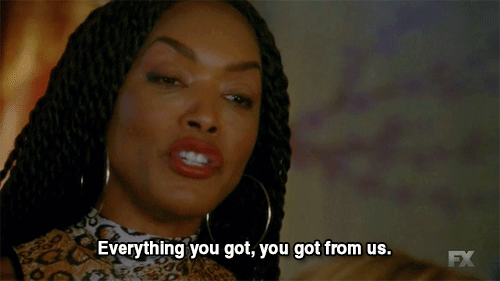
Hoodoo in America by Zora Neale Hurston (1931)
Mules and Men by Zora Neale Hurston (1936)
Tell my horse by Zora Neale Hurston (1938)
Let Nobody Turn Us Around: An African American Anthology by Manning Marable and Leith Mullings, editors (2003)
Black Magic: Religion and the African American Conjuring Tradition by Yvonne P. Chireau (2006)
African American Folk Healing by Stephanie Mitchem (2007)
Hoodoo Medicine: Gullah Herbal Remedies by Faith Mitchell (2011)
Mojo Workin': The Old African American Hoodoo System by Katrina Hazzard-Donald (2012)
Rootwork: Using the Folk Magick of Black America for Love, Money and Success by Tayannah Lee McQuillar (2012)
Talking to the Dead: Religion, Music, and Lived Memory among Gullah/Geechee Women by LeRhonda S. Manigault-Bryant (2014)
Working the Roots: Over 400 Years Of Traditional African American Healing by Michele Elizabeth Lee (2017)
Barracoon: The Story of the Last "Black Cargo" by Zora Neale Hurston (2018)
Jambalaya: The Natural Woman's Book of Personal Charms and Practical Rituals by Luisa Teish (2021)
African American Herbalism: A Practical Guide to Healing Plants and Folk Traditions by Lucretia VanDyke (2022)
youtube
youtube
youtube
youtube
These are just some suggestions but there's many many more!! This is by no means a complete list.
I recommend to avoid authors who downplay the importance of black history or straight out deny how blackness is central to hoodoo. The magic, power and ashé is in the culture and bloodline. You can't separate it from the people. I also recommend avoiding or at the very least taking with a huge grain of salt authors with ties to known appropriators and marketeers, and anyone who propagates revisionist history or rather denies historical facts and spreads harmful conspiracy theories. Sadly, that includes some black authors, particularly those who learnt from, and even praise, white appropriators undermining hoodoo and other african and african diasporic traditions. Be careful who you get your information from. Keeping things traditional means honoring real history and truth.
Let me also give you a last but very important reminder: the best teachings you'll ever get are going to come from the mouths of your own blood. Not a book or anything on the internet. They may choose to put certain people and things in your path to help you or point you in the right direction, but each lineage is different and you have to honor your own. Talk to your family members, to the Elders in your community, learn your genealogy, divine before moving forwards, talk to your dead, acknowledge your people and they'll acknowledge you and guide you to where you need to be.
May this be of service and may your ancestors and spirits bless you and yours 🕯️💀
#hoodoo#conjure#rootwork#black hoodoo authors#Youtube#hoodoo books#african american conjure#african american history#black history#black folklore#african american folklore#black magic#african american magic#witches of color#ATRs#Spotify
1K notes
·
View notes
Text
So you want to learn about Louisiana Voodoo…
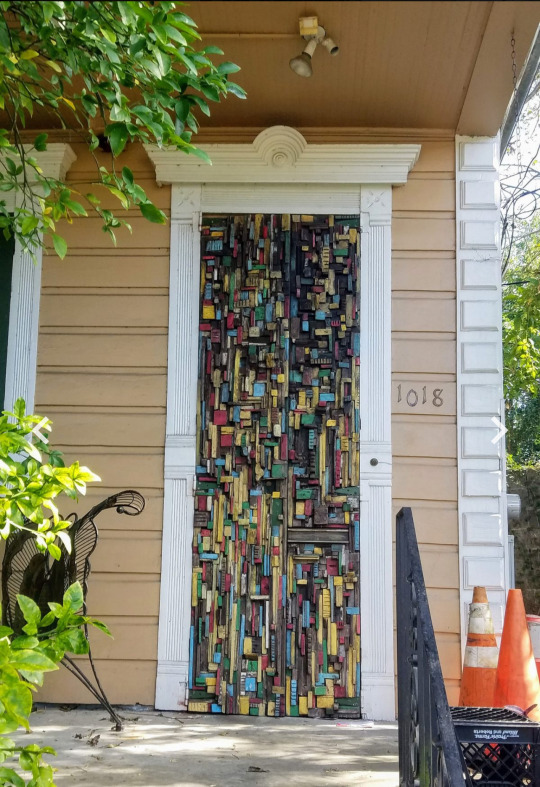
door in New Orleans by Jean-Marcel St. Jacques
For better or worse (almost always downright wrong) Louisiana Voodoo and Hoodoo are likely to come up in any depiction of the state of Louisiana. I’ve created a list of works on contemporary and historical Voodoo/Hoodoo for anyone who’d like to learn more about what this tradition is and is not (hint: it developed separately from Haitian Vodou which is its own thing) or would like to depict it in a non-stereotypical way. I’ve listed them in chronological order. Please keep a few things in mind. Almost all sources presented unfortunately have their biases. As ethnographies Hurston’s work no longer represent best practices in Anthropology and has been suspected of embellishment and sensationalism on this topic. Additionally the portrayal is of the religion as it was nearly 100 years ago- all traditions change over time. Likewise Teish is extremely valuable for providing an inside view into the practice but certain views, as on Ancient Egypt, may be offensive now. I have chosen to include the non-academic works by Alvarado and Filan for the research on historical Voodoo they did with regards to the Federal Writer’s Project that is not readily accessible, HOWEVER, this is NOT a guide to teach you to practice this closed tradition, and again some of the opinions are suspect- DO NOT use sage, which is part of Native practice and destroys local environments. I do not support every view expressed but think even when wrong these sources present something to be learned about the way we treat culture
*Start with Osbey, the shortest of the works. To compare Louisiana Voodoo with other traditions see the chapter on Haitian Vodou in Creole Religions of the Caribbean by Olmos and Paravinsi-Gebert. Additionally many songs and chants were originally in Louisiana Creole (different from the Louisiana French dialect), which is now severely endangered. You can study the language in Ti Liv Kreyol by Guillery-Chatman et. Al.
Le Petit Albert by Albertus Parvus Lucius (1706) grimoire widely circulated in France in the 18th century, brought to the colony & significantly impacted Hoodoo
Mules and Men by Zora Neale Hurston (1935)
Spirit World-Photographs & Journal: Pattern in the Expressive Folk Culture of Afro-American New Orleans by Michael P. Smith (1984)
Jambalaya: The Natural Woman's Book of Personal Charms and Practical Rituals by Luisah Teish (1985)
Eve’s Bayou (1997), film
Spiritual Merchants: Religion, Magic, and Commerce by Carolyn Morrow Long (2001)
A New Orleans Voodoo Priestess: The Legend and Reality of Marie Laveau by Carolyn Morrow Long (2006)
“Yoruba Influences on Haitian Vodou and New Orleans Voodoo” by Ina J. Fandrich (2007)
The New Orleans Voodoo Handbook by Kenaz Filan (2011)
“Why We Can’t Talk To You About Voodoo” by Brenda Marie Osbey (2011)
Mojo Workin': The Old African American Hoodoo System by Katrina Hazzard-Donald (2013)
The Tomb of Marie Laveau In St. Louis Cemetery No. 1 by Carolyn Morrow Long (2016)
Lemonade, visual album by Beyonce (2016)
How to Make Lemonade, book by Beyonce (2016)
“Work the Root: Black Feminism, Hoodoo Love Rituals, and Practices of Freedom” by Lyndsey Stewart (2017)
The Lemonade Reader edited by Kinitra D. Brooks and Kameelah L. Martin (2019)
The Magic of Marie Laveau by Denise Alvarado (2020)
In Our Mother’s Gardens (2021), documentary on Netflix, around 1 hour mark traditional offering to the ancestors by Dr. Zauditu-Selassie
“Playing the Bamboula” rhythm for honoring ancestors associated with historical Voodoo
Voodoo and Power: The Politics of Religion in New Orleans 1880-1940 by Kodi A. Roberts (2023)
The Marie Laveau Grimoire by Denise Alvarado (2024)
Voodoo: An African American Religion by Jeffrey E. Anderson (2024)
#I’ll continue to update as I find more sources#Please be respectful of other people’s religion#Louisiana Voodoo#Louisiana Hoodoo#In the case of authors behind a paywall or whom you do not wish to support I highly recommend your local library#I do not support every view but think even when wrong they present something to be learned about the way we treat culture#Voodoo#Hoodoo#conjure#rootwork#Books
34 notes
·
View notes
Text
Part 1. Charms / Jujus Used in Real Hoodoo.
In traditional hoodoo we don't have amulets, but we do have a few charms here are some that are traditional

Mojo Wish Beans also called African Wishing Beans is believed to possess the power to make your wishes come true. In some beliefs they are distributed for luck or carried in a flannel bag to obtain desires.

Buckeye Nut. Gets rid of and turns back all evil, jinxes, or curses placed on you by the devil or your enemies. Brings good luck to you!

DEVIL POD
This curio is often used for protection both in the home and on your person in a mojo bag.
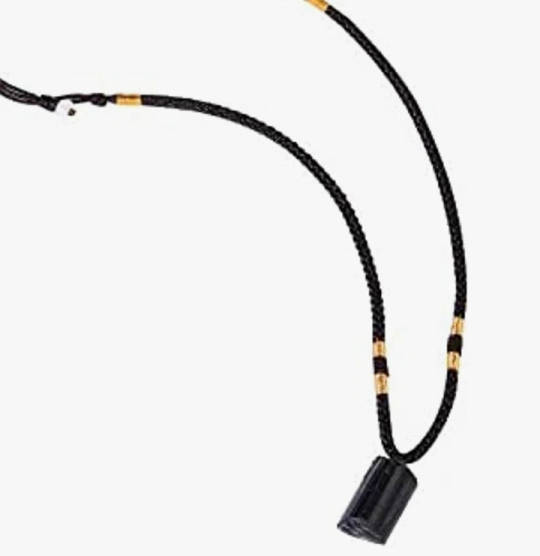
A Jet Stone has long been carried in real traditional hoodoo, to keep away negative spirits, energy, and vibrations.

Black Tourmaline, known as a grounding stone, is believed to foster a connection between the Earth and the human spirit, aiding in the removal of negative energies within a person or a space. Helps with your work.
#Hoodoo charms#like and/or reblog!#spiritual#rootwork#conjuring#traditional hoodoo#southern hoodoo#follow my blog#hoodoo#Charms
82 notes
·
View notes
Text
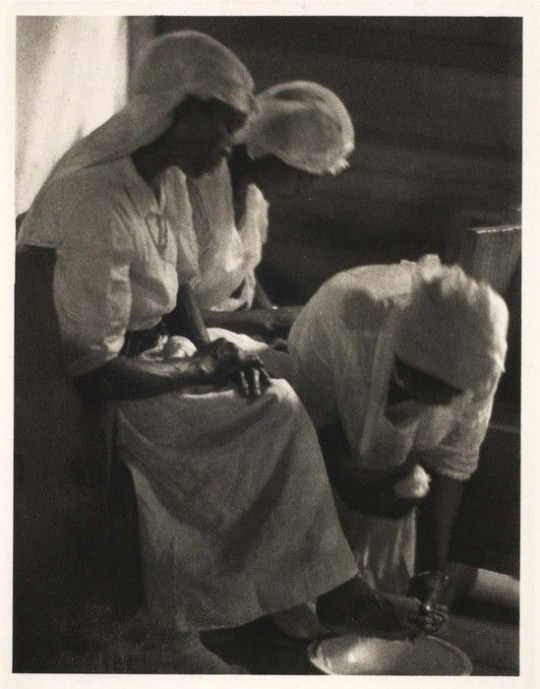
"Holiness Hoodoo: Rediscovering Ancestral Roots Without Jesus"
The term "Holiness Hoodoo" may leave some people puzzled, so allow me to clarify its meaning. In my view, Holiness Hoodoo represents a return to the traditional practices of my ancestral lineage, a way to decipher who I am and what my purpose entails. Many of our forebears were devout Christians, and this undeniable fact forms the backdrop of my spiritual journey. Despite the complex relationship that many Black Americans have with the Bible due to the scars of slavery, it's essential to remember that it wasn't the Bible itself that caused harm, but the people wielding it as a tool of oppression.
As I delved deeper into the realms of ancestral magic, I began to notice striking parallels with church practices. To some, I seemed too "churchy" for hoodoo, and to others, too "hoodoo" for the church—there appeared to be no middle ground. However, I've come to understand that my connection to my ancestors is the cornerstone of my spiritual practice. I've realized that perhaps the reason some individuals struggle to communicate with their spirits is that they try to venerate them through African traditions, tarot, or other methods their ancestors might not recognize.
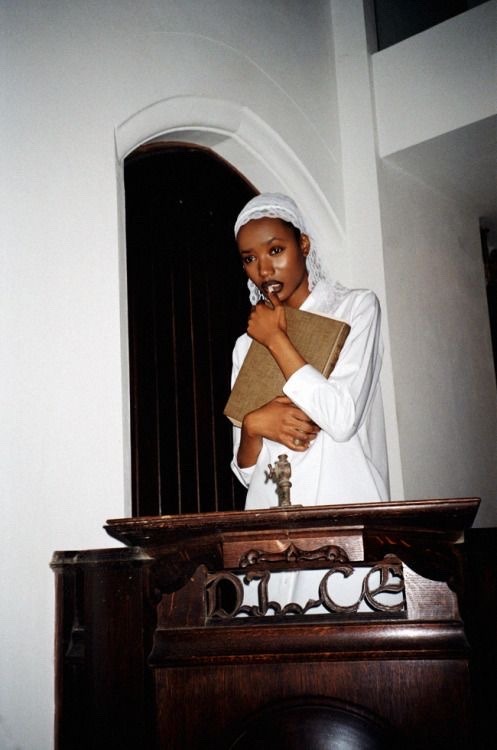
The Bible, as a potent tool in hoodoo, is not revered because we live by its teachings but because it contains powerful scriptures. My mother, for instance, believed in Jesus, yet she was a practitioner of hoodoo—a tongue-speaking, spirit-conjuring woman. Her approach, which I now embrace, is what I refer to as "Holiness Hoodoo."

So, what does Holiness Hoodoo look like for me?
1. Setting the Atmosphere:
I play inspirational or gospel music that resonates with my specific needs, allowing it to fill my home as I clean, pray, or perform spiritual work. Gospel music serves as a direct conduit to my ancestral spirits, and sometimes, when I hear a song I haven't listened to in a while, an ancestor's presence is assured.
2. Keeping a Bible on the Altar:
While I don't read the Bible frequently, I keep it open to the Psalms as an offering to my spirits. The Bible also serves as a powerful tool of protection, and specific verses and pages can function as talismans and petitions.
3. Baptisms:
Baptism, in my lineage, is a ritual practice to wash ourselves of sins and start anew. It's not just for babies; it can also cleanse generational curses and traumas passed down from parents.
4. Shouting:
Listening to gospel music, I engage in the practice of shouting, a form of ecstatic dance that connects me with my spirits. This practice fills me with light and often results in downloads of ancestral wisdom.
5. Laying of Hands:
I perform the laying of hands, a practice I'll discuss in more detail in the future. It's distinct from Reiki and is a significant part of my spiritual tradition.
6. Fasting:
Fasting is a part of my spiritual practice, serving as a means of both elevating my spiritual consciousness and cleansing my body. I firmly believe that one's health plays a pivotal role in their spiritual journey.
Holiness Hoodoo is about preserving the traditions of our ancestors and finding connections with them. It doesn't rely on dogma or strict religious doctrine; instead, it is a pathway to tap into the wisdom and spirituality that has been passed down through generations. In this practice, there is no room for being "too churchy" or "too hoodoo"—it's about embracing the rich tapestry of our heritage and harnessing it for a profound and authentic spiritual experience.
Please make sure you SHARE! SHARE! SHARE! For more if you enjoyed this post.
Don’t forget My MInd and Me inc is still seeking donors for The Peoples Praise House! Even if you cannot donate, SHARE ! Thank you !
@conjuhwoeman on twitter
@realconjuhwoeman on IG
#hoodoo#medium#ancestor veneration#witch#rootwork#black women#conjure#prophet#tutnese#luxury#traditional hoodoo#holiness
96 notes
·
View notes